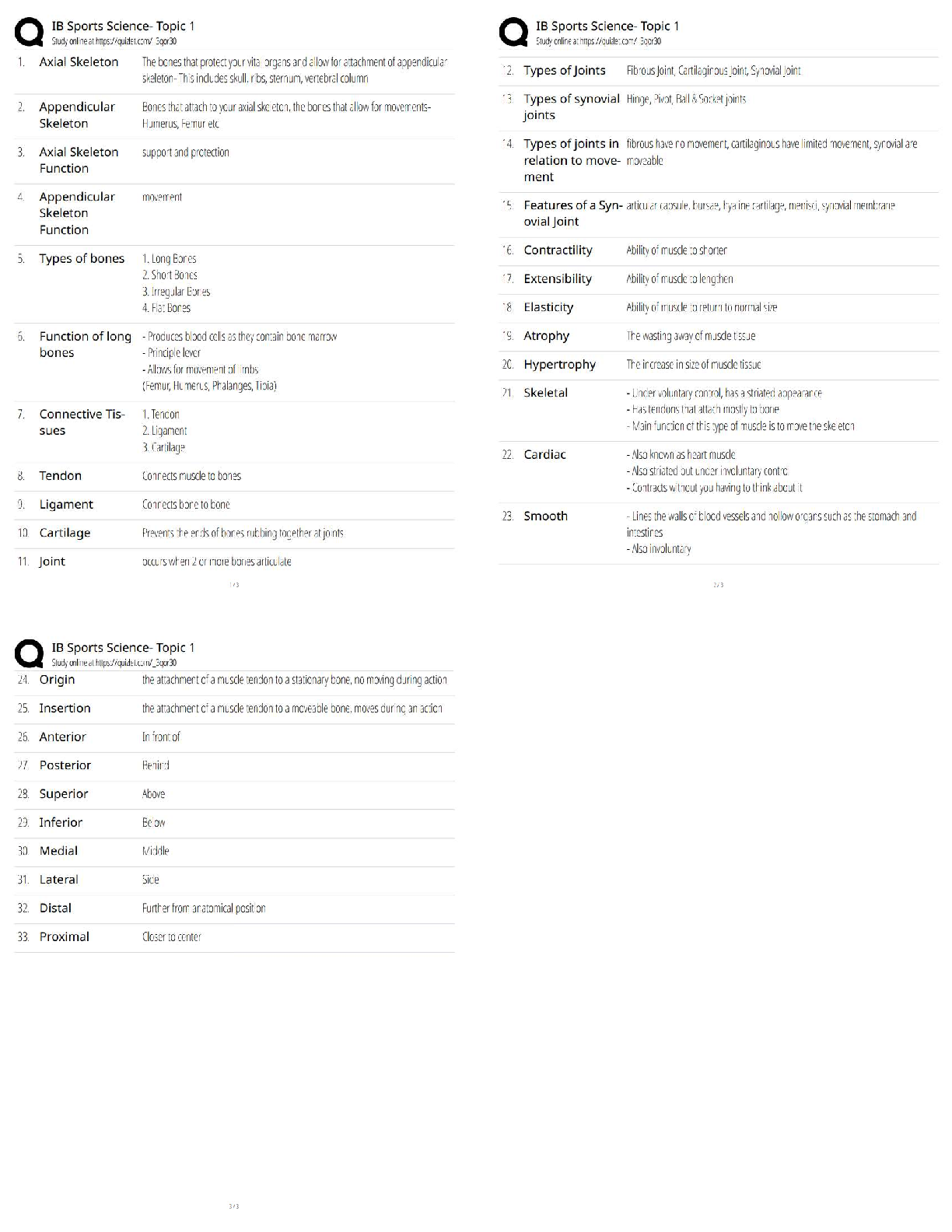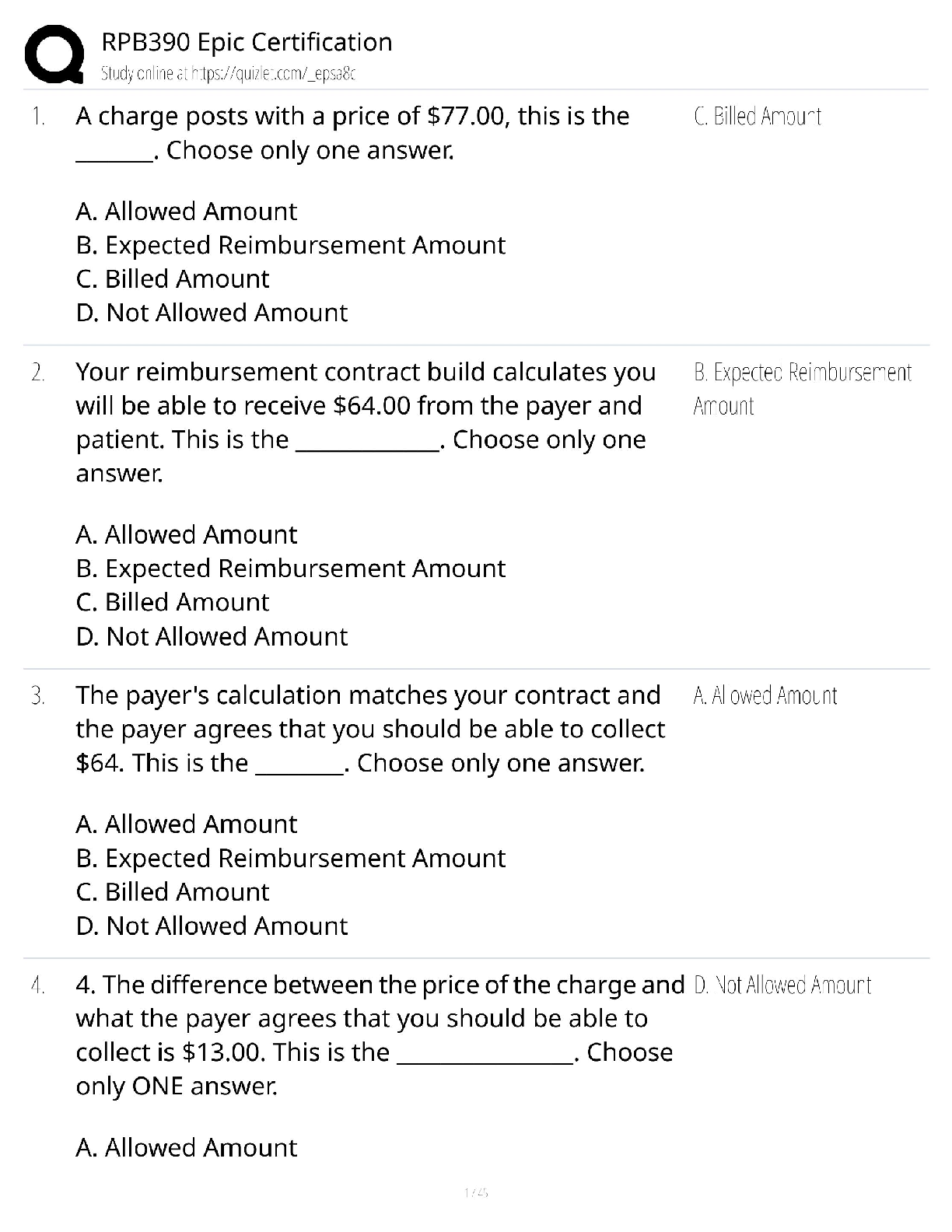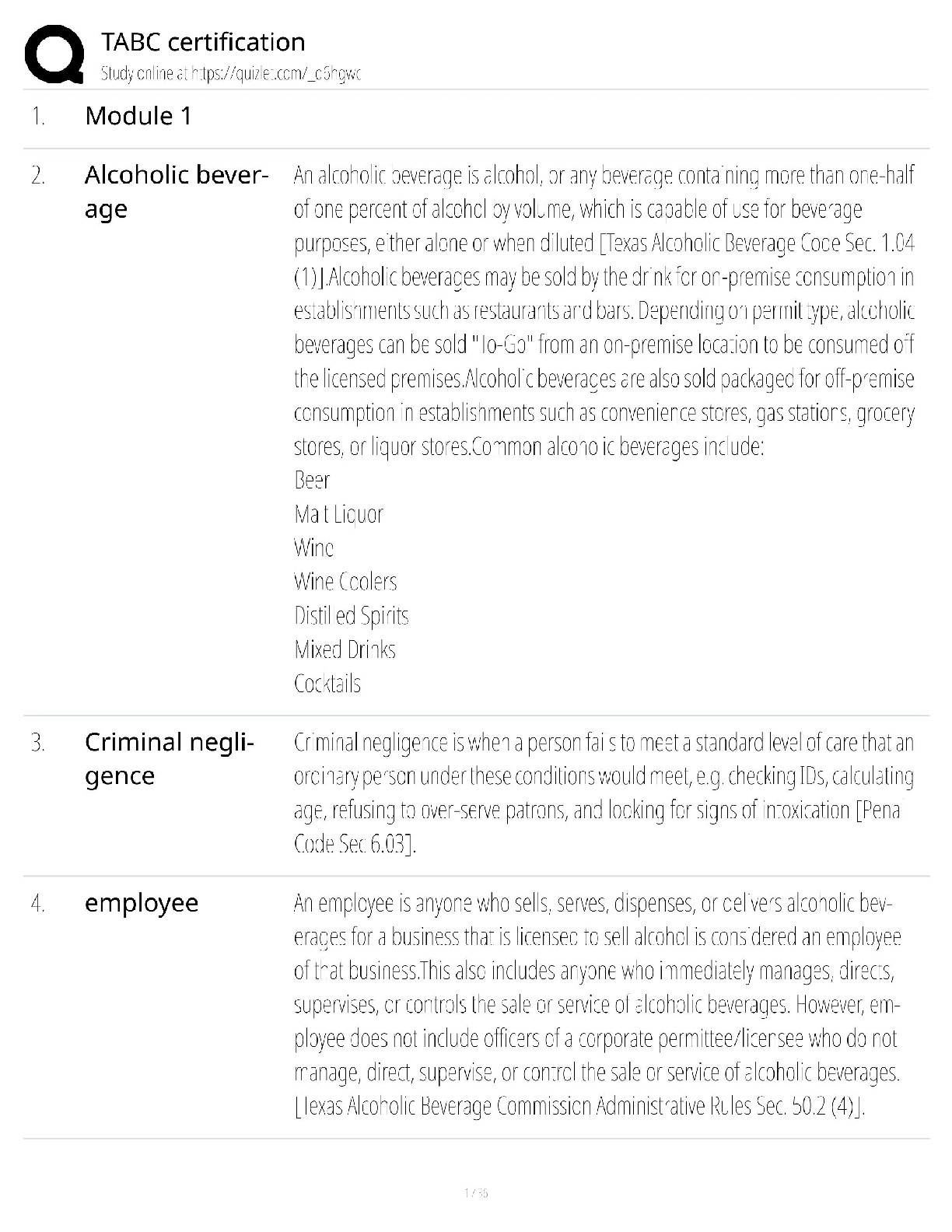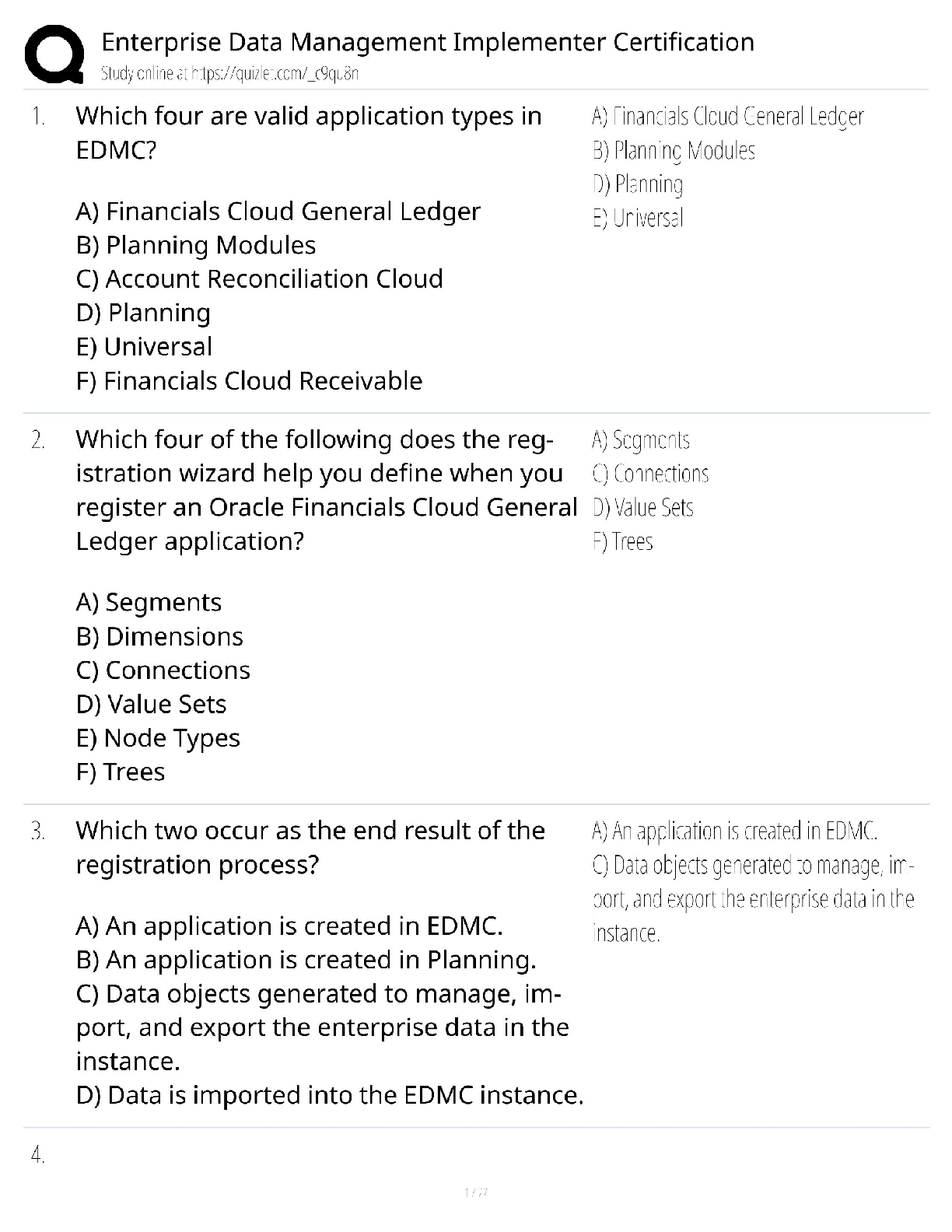Georgia Institute Of Technology ISYE 6644-HW 7-Module 7-QUESTIONS WITH CORRECT ANSWERS
Document Content and Description Below
ISyE 6644 | HW7 | Summer 2020
(covers Module 7, Lessons 1{9)
1. (Lesson 7.1: Introduction to Random Variate Generation.)
Unif(0,1) PRNs can be used to generate which of the following random entitie
...
s?
(a) Exp(λ) random variates
(b) Nor(0,1) random variates
(c) Triangular random variates
(d) Bern(p) random variates
(e) Nonhomogeneous Poisson processes
(f) All of the above | and just about anything else!
Solution: (f). 2
2. (Lesson 7.2: Inverse Transform Theorem | Intro.)
If X is an Exp(λ) random variable with c.d.f. F(x) = 1 − e−λx, what’s the distribution of the random variable 1 − e−λX?
(a) Unif(0,1)
(b) Nor(0,1)
(c) Triangular
(d) Exp(λ)
(e) None of the above
Solution: Note that 1 − e−λX = F(X) ∼ Unif(0; 1), where the last step follows
by the Inverse Transform Theorem. Thus, the correct answer is (a). 2
3. (Lesson 7.2: Inverse Transform Theorem | Intro.)
If U is a Unif(0,1) random variable, what’s the distribution of −λ1‘n(U)?
(a) Unif(0,1)2
(b) Nor(0,1)
(c) Triangular
(d) Exp(λ)
(e) None of the above
Solution: Since U and 1 − U are both Unif(0,1) (by symmetry), we have
−
1 λ
‘n(U) ∼ −1
λ‘n(1 − U) ∼ Exp(λ);
where the last step follows from Lesson 2’s Inverse Transform Theorem example.
Thus, the answer is (d). 2
4. (Lesson 7.2: Inverse Transform Theorem | Intro.)
Suppose that U1; U2; : : : ; U5000 are i.i.d. Unif(0,1) random variables. Using Excel (or
your favorite programming language), simulate Xi = −‘n(Ui) for i = 1; 2; : : : ; 5000.
Draw a histogram of the 5000 numbers. What p.d.f. does the histogram look like?
(a) Uniform
(b) Normal
(c) Triangular
(d) Exponential
(e) Bernoulli
Solution: By the Inverse Transform Theorem, all of the Xi’s are Exp(λ = 1).
Since we have a histogram of 5000 of these, it really ought to look like an
exponential p.d.f., f(x) = e−x, x ≥ 0. Thus, the answer is (d). 2
5. (Lesson 7.3: Inverse Transform | Continuous Examples.)
Suppose the c.d.f. of X is F(x) = x3=8, 0 ≤ x ≤ 2. Develop a generator for X and
demonstrate with U = 0:54.
(a) X = U3=8 = 0:0197
(b) X = 8U3 = 1:260
(c) X = 2U1=3 = 1:6293
(d) X = 4U1=3 = 3:257
(e) X = 8U1=3 = 6:515
Solution: Set F (X) = U ∼ Unif(0; 1). Then U = X3=8, and so X = 2U1=3.
Plugging in U = 0:54, we get X = 1:629. Thus, the correct answer is (c) 2
6. (Lesson 7.3: Inverse Transform | Continuous Examples.)
If X is a Nor(0,1) random variate, and Φ(x) is the Nor(0,1) c.d.f., what is the
distribution of Φ(X)?
(a) Uniform
(b) Normal
(c) Triangular
(d) Exponential
(e) Bernoulli
Solution: By the Inverse Transform Theorem, Φ(X) ∼ Unif(0; 1); so the answer
is (a). 2
[Show More]
Last updated: 3 years ago
Preview 1 out of 8 pages





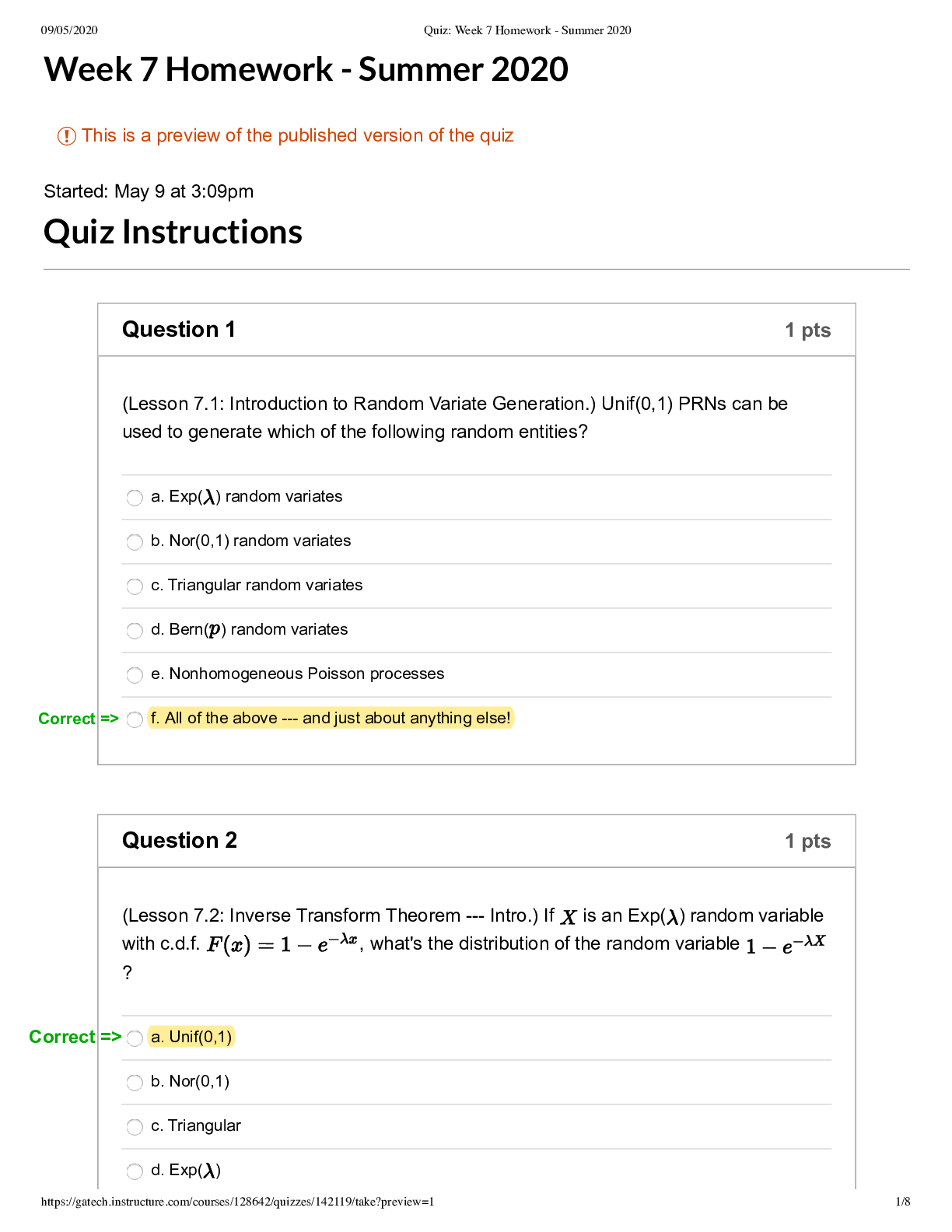








.png)

.png)



